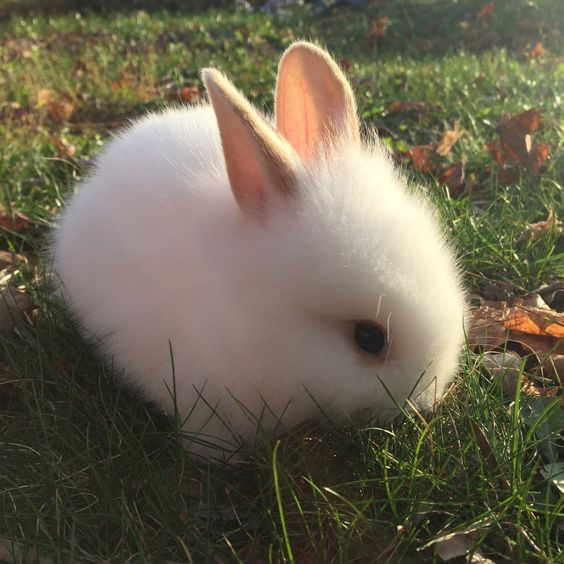diff options
Diffstat (limited to 'wgpu/src/image/vector.rs')
| -rw-r--r-- | wgpu/src/image/vector.rs | 198 |
1 files changed, 149 insertions, 49 deletions
diff --git a/wgpu/src/image/vector.rs b/wgpu/src/image/vector.rs index 713978f5..1a9352f2 100644 --- a/wgpu/src/image/vector.rs +++ b/wgpu/src/image/vector.rs @@ -1,8 +1,9 @@ use iced_native::svg; use std::{ collections::{HashMap, HashSet}, - rc::Rc, + fmt, }; +use guillotiere::{Allocation, AtlasAllocator, Size}; pub enum Svg { Loaded { tree: resvg::usvg::Tree }, @@ -22,27 +23,63 @@ impl Svg { } } -impl std::fmt::Debug for Svg { +impl fmt::Debug for Svg { fn fmt(&self, f: &mut std::fmt::Formatter<'_>) -> std::fmt::Result { write!(f, "Svg") } } -#[derive(Debug)] pub struct Cache { + allocator: AtlasAllocator, + atlas: wgpu::Texture, svgs: HashMap<u64, Svg>, - rasterized: HashMap<(u64, u32, u32), Rc<wgpu::BindGroup>>, + rasterized: HashMap<(u64, u32, u32), Allocation>, svg_hits: HashSet<u64>, rasterized_hits: HashSet<(u64, u32, u32)>, } +impl fmt::Debug for Cache { + fn fmt(&self, fmt: &mut fmt::Formatter<'_>) -> fmt::Result { + fmt.debug_struct("Vector Cache") + .field("allocator", &String::from("AtlasAllocator")) + .field("atlas", &self.atlas) + .field("svgs", &self.svgs) + .field("rasterized", &String::from("HashMap<(u64, u32, u32), Allocation>")) + .field("svg_hits", &self.svg_hits) + .field("rasterized_hits", &self.rasterized_hits) + .finish() + } +} + impl Cache { - pub fn new() -> Self { + pub fn new(device: &wgpu::Device) -> Self { + let (width, height) = (512, 512); + + let extent = wgpu::Extent3d { + width, + height, + depth: 1, + }; + + let atlas = device.create_texture(&wgpu::TextureDescriptor { + size: extent, + array_layer_count: 1, + mip_level_count: 1, + sample_count: 1, + dimension: wgpu::TextureDimension::D2, + format: wgpu::TextureFormat::Bgra8UnormSrgb, + usage: wgpu::TextureUsage::COPY_DST + | wgpu::TextureUsage::COPY_SRC + | wgpu::TextureUsage::SAMPLED, + }); + Self { svgs: HashMap::new(), rasterized: HashMap::new(), svg_hits: HashSet::new(), rasterized_hits: HashSet::new(), + allocator: AtlasAllocator::new(Size::new(width as i32, height as i32)), + atlas, } } @@ -62,6 +99,10 @@ impl Cache { self.svgs.get(&handle.id()).unwrap() } + pub fn atlas_size(&self) -> guillotiere::Size { + self.allocator.size() + } + pub fn upload( &mut self, handle: &svg::Handle, @@ -69,8 +110,7 @@ impl Cache { scale: f32, device: &wgpu::Device, encoder: &mut wgpu::CommandEncoder, - texture_layout: &wgpu::BindGroupLayout, - ) -> Option<Rc<wgpu::BindGroup>> { + ) -> Option<&Allocation> { let id = handle.id(); let (width, height) = ( @@ -82,36 +122,88 @@ impl Cache { // We currently rerasterize the SVG when its size changes. This is slow // as heck. A GPU rasterizer like `pathfinder` may perform better. // It would be cool to be able to smooth resize the `svg` example. - if let Some(bind_group) = self.rasterized.get(&(id, width, height)) { + if self.rasterized.get(&(id, width, height)).is_some() { let _ = self.svg_hits.insert(id); let _ = self.rasterized_hits.insert((id, width, height)); - return Some(bind_group.clone()); + return self.rasterized.get(&(id, width, height)); } - match self.load(handle) { + let _ = self.load(handle); + + match self.svgs.get(&handle.id()).unwrap() { Svg::Loaded { tree } => { if width == 0 || height == 0 { return None; } - let extent = wgpu::Extent3d { - width, - height, - depth: 1, - }; + let size = Size::new(width as i32, height as i32); + let old_atlas_size = self.allocator.size(); + let allocation; + + loop { + if let Some(a) = self.allocator.allocate(size) { + allocation = a; + break; + } - let texture = device.create_texture(&wgpu::TextureDescriptor { - size: extent, - array_layer_count: 1, - mip_level_count: 1, - sample_count: 1, - dimension: wgpu::TextureDimension::D2, - format: wgpu::TextureFormat::Bgra8UnormSrgb, - usage: wgpu::TextureUsage::COPY_DST - | wgpu::TextureUsage::SAMPLED, - }); + self.allocator.grow(self.allocator.size() * 2); + } + let new_atlas_size = self.allocator.size(); + + if new_atlas_size != old_atlas_size { + let new_atlas = device.create_texture(&wgpu::TextureDescriptor { + size: wgpu::Extent3d { + width: new_atlas_size.width as u32, + height: new_atlas_size.height as u32, + depth: 1, + }, + array_layer_count: 1, + mip_level_count: 1, + sample_count: 1, + dimension: wgpu::TextureDimension::D2, + format: wgpu::TextureFormat::Bgra8UnormSrgb, + usage: wgpu::TextureUsage::COPY_DST + | wgpu::TextureUsage::COPY_SRC + | wgpu::TextureUsage::SAMPLED, + }); + + encoder.copy_texture_to_texture( + wgpu::TextureCopyView { + texture: &self.atlas, + array_layer: 0, + mip_level: 0, + origin: wgpu::Origin3d { + x: 0.0, + y: 0.0, + z: 0.0, + }, + }, + wgpu::TextureCopyView { + texture: &new_atlas, + array_layer: 0, + mip_level: 0, + origin: wgpu::Origin3d { + x: 0.0, + y: 0.0, + z: 0.0, + }, + }, + wgpu::Extent3d { + width: old_atlas_size.width as u32, + height: old_atlas_size.height as u32, + depth: 1, + } + ); + + self.atlas = new_atlas; + } + + // TODO: Optimize! + // We currently rerasterize the SVG when its size changes. This is slow + // as heck. A GPU rasterizer like `pathfinder` may perform better. + // It would be cool to be able to smooth resize the `svg` example. let temp_buf = { let screen_size = resvg::ScreenSize::new(width, height).unwrap(); @@ -122,7 +214,7 @@ impl Cache { ); resvg::backend_raqote::render_to_canvas( - &tree, + tree, &resvg::Options::default(), screen_size, &mut canvas, @@ -146,48 +238,56 @@ impl Cache { image_height: height as u32, }, wgpu::TextureCopyView { - texture: &texture, + texture: &self.atlas, array_layer: 0, mip_level: 0, origin: wgpu::Origin3d { - x: 0.0, - y: 0.0, + x: allocation.rectangle.min.x as f32, + y: allocation.rectangle.min.y as f32, z: 0.0, }, }, - extent, + wgpu::Extent3d { + width, + height, + depth: 1, + }, ); - let bind_group = - device.create_bind_group(&wgpu::BindGroupDescriptor { - layout: texture_layout, - bindings: &[wgpu::Binding { - binding: 0, - resource: wgpu::BindingResource::TextureView( - &texture.create_default_view(), - ), - }], - }); - - let bind_group = Rc::new(bind_group); - - let _ = self - .rasterized - .insert((id, width, height), bind_group.clone()); - let _ = self.svg_hits.insert(id); let _ = self.rasterized_hits.insert((id, width, height)); + let _ = self + .rasterized + .insert((id, width, height), allocation); - Some(bind_group) + self.rasterized.get(&(id, width, height)) } - Svg::NotFound => None, + Svg::NotFound => None } } + pub fn atlas(&self, device: &wgpu::Device, texture_layout: &wgpu::BindGroupLayout) -> wgpu::BindGroup { + device.create_bind_group(&wgpu::BindGroupDescriptor { + layout: texture_layout, + bindings: &[wgpu::Binding { + binding: 0, + resource: wgpu::BindingResource::TextureView( + &self.atlas.create_default_view(), + ), + }], + }) + } + pub fn trim(&mut self) { let svg_hits = &self.svg_hits; let rasterized_hits = &self.rasterized_hits; + for (k, alloc) in &mut self.rasterized { + if !rasterized_hits.contains(&k) { + self.allocator.deallocate(alloc.id); + } + } + self.svgs.retain(|k, _| svg_hits.contains(k)); self.rasterized.retain(|k, _| rasterized_hits.contains(k)); self.svg_hits.clear(); |
